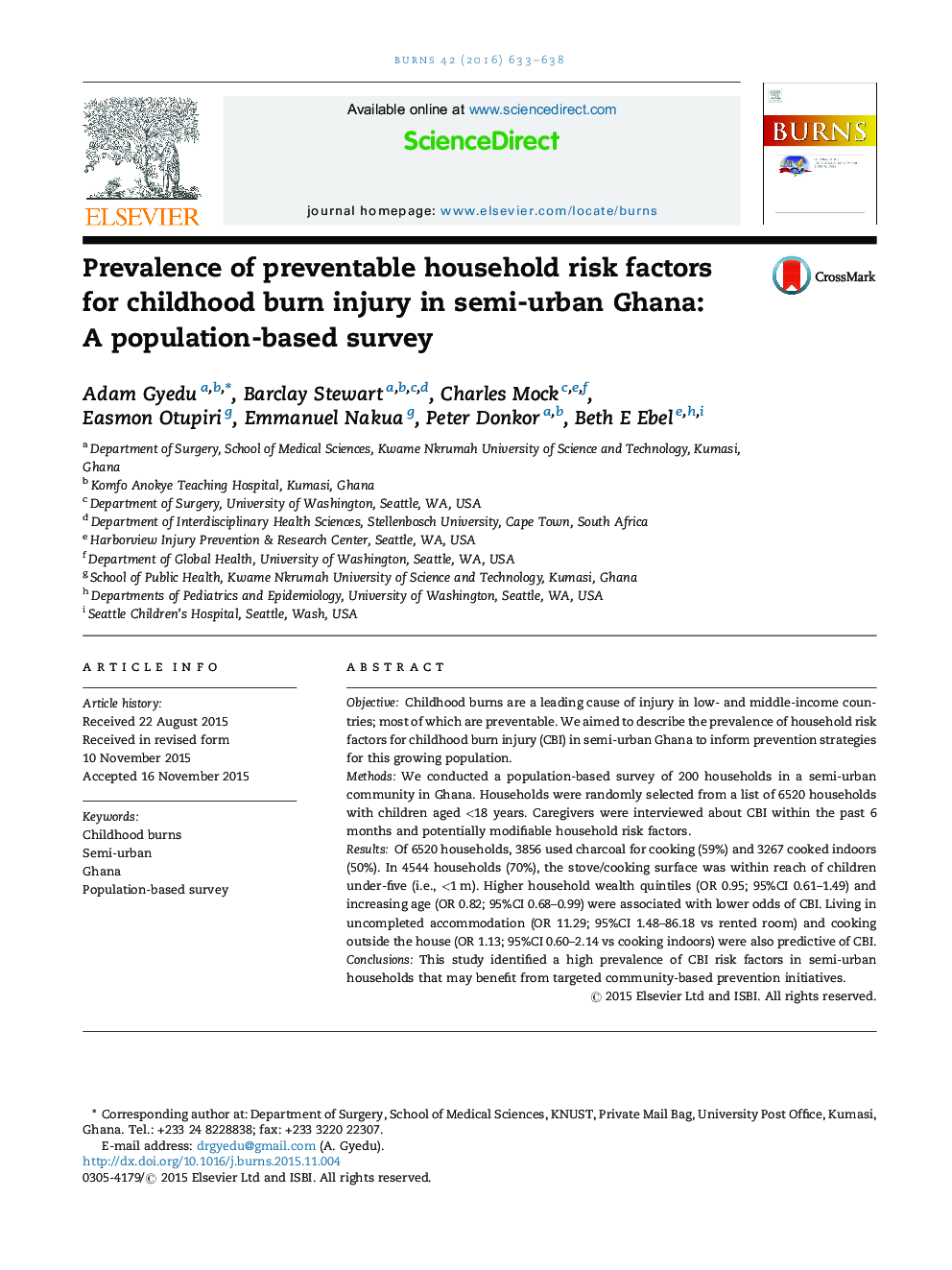| Article ID | Journal | Published Year | Pages | File Type |
|---|---|---|---|---|
| 3104142 | Burns | 2016 | 6 Pages |
•Prevalence of household risk factors for childhood burns in semi-urban Ghana is high.•50% of households cook indoors in the absence of a separate kitchen.•In most households, the stove/cooking surface is within reach of children under-five.•Higher household wealth quintiles and increasing age were associated with lower odds of childhood burn injuries.•Living in uncompleted accommodation and cooking outside the house were also predictive of childhood burn injuries.
ObjectiveChildhood burns are a leading cause of injury in low- and middle-income countries; most of which are preventable. We aimed to describe the prevalence of household risk factors for childhood burn injury (CBI) in semi-urban Ghana to inform prevention strategies for this growing population.MethodsWe conducted a population-based survey of 200 households in a semi-urban community in Ghana. Households were randomly selected from a list of 6520 households with children aged <18 years. Caregivers were interviewed about CBI within the past 6 months and potentially modifiable household risk factors.ResultsOf 6520 households, 3856 used charcoal for cooking (59%) and 3267 cooked indoors (50%). In 4544 households (70%), the stove/cooking surface was within reach of children under-five (i.e., <1 m). Higher household wealth quintiles (OR 0.95; 95%CI 0.61–1.49) and increasing age (OR 0.82; 95%CI 0.68–0.99) were associated with lower odds of CBI. Living in uncompleted accommodation (OR 11.29; 95%CI 1.48–86.18 vs rented room) and cooking outside the house (OR 1.13; 95%CI 0.60–2.14 vs cooking indoors) were also predictive of CBI.ConclusionsThis study identified a high prevalence of CBI risk factors in semi-urban households that may benefit from targeted community-based prevention initiatives.
